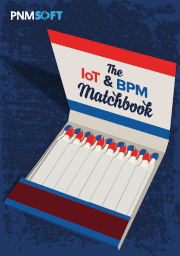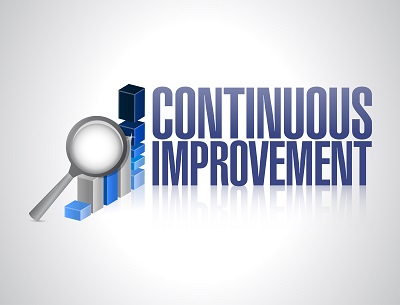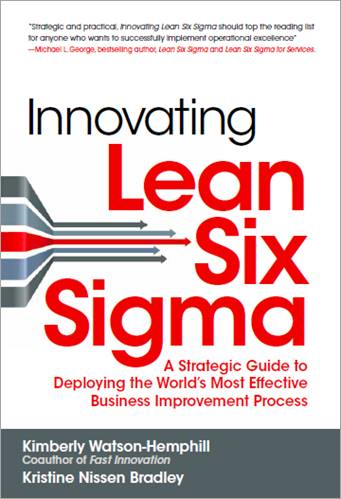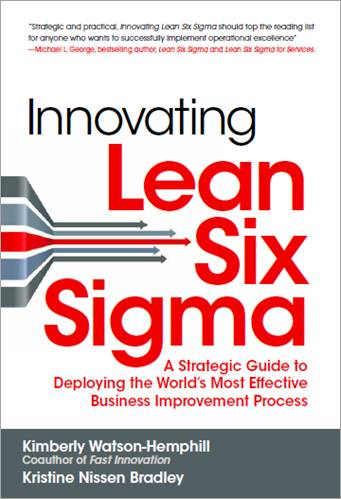Home / Resources
Resources
Discover a Wealth of BPM Knowledge and Expertise at BPMInstitute.org!

The Eloquent Business Architect: Lessons from the Field
hot button word – Noun
i. a word that triggers a highly charged emotional or political response

When Doing Less Gets You More
Author’s Note: I originally learned about the laws of subtraction some years ago when I was leading a research and innovation organization. The six principles in this article came from The Laws of Subtraction: 6 Simple Rule for Winning in the Age of Excess Everything by Matthew E. May. Business architects can apply these principles to produce more value and raise their level of success in any organization.

The IoT & BPM Matchbook
IoT is Hot. Not surprisingly, when you picture wearable devices, sensors and smart machines that are connected to the internet – all eager to make lives easier, provide information, react and interact with the human world. But in the business world, something is missing. Where is a system that can integrate IoT devices with mission critical business processes?
That system is very likely BPM. Business Process Management suites have become the leading technology for fast, enterprise-changing systems which optimize and streamline workflows for organizations in nearly every industry.
What if these two awesome forces – IoT and BPM – could be combined?
In this pocket-sized BPM & IoT Matchbook, we explore the possibilities opened by matching IoT devices with BPM technology.

The Process Bulldog
The Process Bulldog is a lynchpin role at the heart of a healthy process culture. This role is the connection layer of your process governance structure – linking the vision of the leadership team with the creativity of the process owners and participants, the people who are involved in process challenges every day. Every organization needs one.
We previously called this role the Lead Process Champion, but at our Promapp User Summits this year the term ‘Process Bulldog’ was used to describe the attributes needed to succeed as a process champion – and everyone loved it.

Five Pitfalls of Organizational Process Metrics
Traditional metrics have historically focused on financial and operating factors. What is newer is organizational process metrics or metrics that measure how a process works from the company point of view and the customer point of view. How is the company doing at meeting a customer needs (such as accuracy, responsiveness, service, speed, completeness) and how is the process doing being efficient and effective so the company can be competitive in the market place at a good price?
This article lists five key pitfalls that organizations face as they start an Organizational Process Metrics initiative and implement it across the company.
Pitfall #1 – Where’s the Decision and Action?

FITARA: Empowering CIOs to Improve the Business of Government
“Our guidance takes major steps in ensuring CIOs have a seat at the table for technology-related budget, procurement, and workforce matters. [It] is centered on a ‘common baseline’ that outlines the roles and responsibilities for agency chief information officers and other senior agency officials. More importantly, it establishes a groundwork for productive partnerships among these leaders to make IT decisions that better support [their business] mission.” – U.S. Chief Information Officer (CIO) Tony Scott (upon releasing the final Federal Information Technology Acquisition Reform Act (FITARA) guidance from the Office of Management and Budget (OMB)
Passed by Congress in December 2014, the Federal Information Technology Reform Act (FITARA) grants more influence and control over investments in information technology (IT) to agency’s CIOs.

Beyond Dashboards – Predictive Analytics and Decision Management
Practitioners in our field have long been evangelizing on the critical link between decision management and predictive analytics. As James Taylor accurately and succinctly stated “Decision Management operationalizes predictive analytics. Traditional approaches to analytics are hard to scale and hard to use in the real-time environment required in modern enterprise architectures.”
On cue I noted with great interest several writers predicting analytics trends for 2016. These included:

A ‘Simple as Possible’ Enterprise Diagnostic Method
I suspect we all agree that it’s very important for business architecture to demonstrate valuable results in a reasonable timeframe. There is nothing more discouraging for business architects and their sponsors than effort spent on modeling for its own sake, or continuous planning to plan the plan. Here, in this article, we have a method that quickly leads to tangible results, while building the foundation for a continuous flow of valuable results from business architecture.

Case Study: Business Architecture at United Airlines
Launching a business architecture program is challenging. Culture, politics, and even our own thinking present significant challenges. Though the challenges are great, the benefits are even greater. Organizations struggling to realize their goals and move their companies forward are in desperate need of the solutions business architecture offers. This webcast features two industry experts who will share their insights into the world of Business Architecture, including the challenges, the opportunities and the road ahead.

Business Architecture Curriculum

The BPM-Discipline: The Strategy Execution Engine for the Digital World
As a recent research study of The Gartner Group shows , only 13% of business meets their strategic goals [1]. This means 87% of organizations prepare strategic plans and related objectives —but they don’t deliver on their strategy, at least not fully. This situation will get even more challenging with the intensifying digitalization and the adjustment of strategies to this trend. Less than 1% of companies have prepared their business processes to realize the potential of our digital world according to the same study. Hence the risk of not executing successfully on a business strategy incorporating the opportunities of digitalization becomes even higher. A just release study by BPM-D, Widener University and the Universidad de Chile demonstrates that over 55% of companies have issues finding the right opportunities to benefit from digitalization or struggle with the resistance to change and the slow decision making [2].

Business Process in a Digital Ecosystem
What stories do you tell others about the early days of computers, before their capacity to process and store information vastly expanded? Do you express amazement at the fantastic state of current digital technology? What about the down sides? Do your stories also include the inconsistencies within applications that frustrate us all? Do you speak about the enormous cost and time required by software engineering processes to develop and maintain systems? Do you comment on the complexity needed for systems to communicate with other systems?

To improve your process modeling, you must measure it.
You can’t improve something which you cannot measure. This is a basic tenet in six-sigma and many other process improvement methodologies. Yet few organizations even consider trying to objectively measure any aspect of the quality of the process models which they implement at the core of their process improvement initiatives. Fortunately, this is an area where the use of a BPM platform offers significant advantages over other technical approaches. The fundamental difference between a BPM solution and a traditional code solution is the existence of an explicit representation of the business process, including the steps, their sequencing, branching and looping, worker assignments and external interfaces. This process representation makes it possible to reason about the characteristics of a BPM solution in ways that are much more difficult with other technologies.

Low code apps: the future or nightmare
Low-code apps are maturing and being adopted in more and more corporations – often taken in by the business users. IT often sees them as threat and a risk. But they can help IT and make them able to be more reactive and supportive to the business users’ needs. But, are they too much power in the hands of citizen developers who are fragmenting the IT architecture? However, cloud low code apps mean that IT will struggle to control their growth/usage. This article explores the pros and cons and the right reaction from the CIO.
The business is now in control
Now that every organization is dependent on technology, Line Of Business(LOB) management are more aware of the capabilities and potential for technology to drive transformational change before their business is undermined by a more nimble, technology enabled start-up.

The Pragmatic Business Architect: Lessons from the Field
Something I have noticed that seems to be lacking in the field of business architecture is pragmatism. Many BA’s I speak with are frustrated at the difficulty they are having in expanding their business architecture practices and in building relationships with business leadership. I believe this is often rooted in unrealistic expectations built from reading BA literature, listening to exaggerated success stories at conferences, and the assumption that what worked somewhere else will work for their company. To all aspiring business architects out there, let me give you a tip: be realistic. Business architecture is definitely more art than science. The following are five examples of how to pragmatically approach working with the business.

Case Study: Living Processes Drive Continuous Improvement at Ricoh
Ricoh is a global technology company, best known for its familiar range of office equipment and services including printers, projectors, document management systems and IT services. Headquartered in Sydney, Ricoh Australia maintains branches in all mainland capital cities.
New services herald a time of change
In the last five years, Ricoh’s Australian operations have been through enormous change. Acquisitions and expansion into new markets, including the development of highly successful professional services and IT services arms, have resulted in the company doubling in size since 2010. Headcount has risen to over 1,100 employees. Major new customers have signed on with the company. To accommodate their needs, many new processes have been developed and old ones changed.
Declan O’Reilly, Business Excellence Manager, describes it as an exceptionally busy period and one that has been dramatic in terms of change.

White Space Forever
The title of the book that made Geary Rummler and Alan Brache authorities in the emerging field of process improvement and management back in 1990 was Improving Performance, but it was the subtitle (How to Manage the White Space on the Organization Chart) that caught attention. Decades later, people still refer to it as the “white space” book; that was why Geary’s 2009 follow-up to Improving Performance was entitled White Space Revisited.
Today the term “white space” has entered common parlance. There are even a couple of consulting firms using the term in their names. It’s come to mean any general lack of connection between things that should be connected. But its original meaning still has value for BPM and Operational Excellence.

Meet the Author: Kimberly Watson-Hemphill, Innovating Lean Six Sigma
In this webcast, author Kimberly Watson-Hemphill will share some highlights from her new book, Innovating Lean Six Sigma (McGraw-Hill, 2016), and provide practical tips every business leader can use to get more from their Lean Six Sigma deployment.
Special Offer for BPMInstitute.org Members
Get your copy of Innovating Lean Six Sigma at 45% off the list price. Take advantage of this offer

Innovating Lean Six Sigma, A Strategic Guide to Deploying the World’s Most Effective Business Improvement Process
The New and Definitive User’s Guide to Lean Six Sigma
If you’re a business leader, you already know that Lean Six Sigma is one of the most popular and powerful business tools in the world today. You also probably know that implementing the process can be more than a little challenging. This step-by-step guide shows you how to customize and apply the principles of Lean Six Sigma to your own organizational needs, giving you more options, strategies, and solutions than you’ll find in any other book on the subject.
With these simple, proven techniques, you can:

Cornerstones of a Business Architecture Practice
Whether driven by top-down mandate or won through demonstrated bottom-up success, there is a point when business architecture achieves “enough” acceptance within an organization to formalize an internal practice. While there are many steps to take throughout the journey of establishing and maturing a business architecture practice, there are four cornerstones that when put into place, can accelerate the process and create significant clarity.
The Need for Formalization
As business architecture’s footprint expands within an organization and as the team grows, there is an increasing need for:













